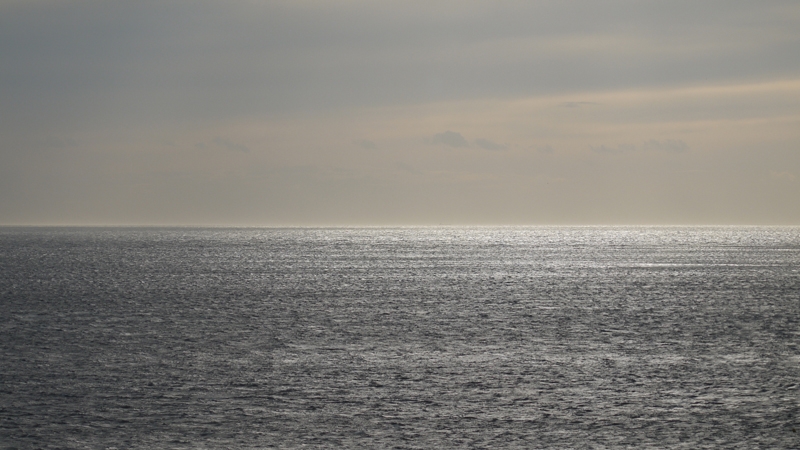Anxiety, impotence and irritation: these are the three central characteristics of FOMO (‘fear of missing out’) according to Sextant et plus, the resident curatorial collective at Friche la Belle de Mai in Marseille. In an ambitious exhibition named after what the curators define in the press materials as a ‘vector of modern romanticism’ and installed on three floors of the Friche’s postindustrial warehouse space, each work responds to the fear of being unable to show our participation in some ephemeral, transcendent event that will come to define the ‘now’.
A.P 43° 11′ 55″ N – 5° 13′ 49″ E (2015), by Jean-Baptiste Sauvage, commissioned for the exhibition, is composed of two elements: a wall-size video projection of the horizon at sea, changing almost imperceptibly as an algorithm layers and aggregates more than 1,500 photographs taken by the artist, and a large generic office plant bathed in a light the colour of its own foliage. The installation, with slight variations in the video’s composition, is repeated on each floor, which produces the persistent feeling that one has visited this section already. If there is a key to the softly mocking romanticism of this show, it is Sauvage’s shimmering, tripled displacement of time and space.
The exhibition’s first floor, organised under the rubric of ‘Dusk’, is the most conceptually cohesive. In Tacita Dean’s The Russian Ending (2001), a series of archival photographs documenting the aftermath of various calamities are etched with annotations, cryptic stage directions. The work’s title refers to the standard convention of providing a different movie ending for American and Russian audiences, happier and more gruesome respectively. A three-and-a-half-minute video by Pierre Huyghe, Blanche-Neige Lucie (1997), presents an edit of a TV interview with a woman in her sixties who was the voiceover artist for the role of Snow White in the French edition of the film, released in 1937. She discovered that Disney was using her voice to promote the brand far beyond the original cartoon movie, and she decided to sue to have the rights to her voice returned. In each case documents are reused, reimagined, without respect for the places in time they were supposed to bear witness to.
On the two other floors, the sections titled ‘Zenith’ and ‘Dawn’ are less focused, perhaps because the idea of time’s crescendo or some beginning to time is hard to imagine in these unrelentingly simultaneous times. When Marseille wakes up it is already midafternoon for Tokyo, so where, when, does the day begin? The best moments are surprises: Random International’s Self Portrait (2010) appears at first glance to be a painting-size blank canvas framed in aluminium, but in fact takes the portrait of whoever was standing in front of it and prints it instantaneously (and temporarily) with light onto an emulsion surface. Its effect is to see one’s wish for inclusion in the very thing one has come to watch tantalisingly fulfilled. Robert Breer’s Floating Wall (2009–10) is just that – an entirely unremarkable, bare L-shaped white wall that moves at an imperceptible speed back and forth across the centre of the gallery. One moment it is crowding Marina Gadonneix’s photographs; 15 minutes later it is awkwardly marooned in the middle of the room. The specially commissioned Title to Come (2015) is Anita Molinero’s idea of a horizon – a series of extruded polystyrene plaques torched with a flamethrower, forming a horizon in multiples that is beautiful without the pretence of innocence.
This is also the message of the exhibition: the documents of our collective anxiety about time may emerge as beautiful images of sunsets, horizon lines stretching out before us promising that we are entitled to adventure and romance. Still, it would be a mistake to overlook the fact that these same images also document a deep fear about the loss of an authentic relationship to time. Taken together, these works both represent and critique this fear, yet with a lightness perfectly suited to summer’s capacity for slow but lucid attention.
This article was first published in the October 2015 issue.
